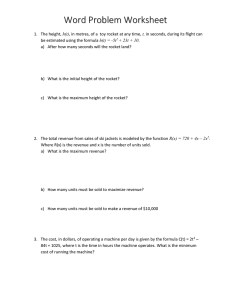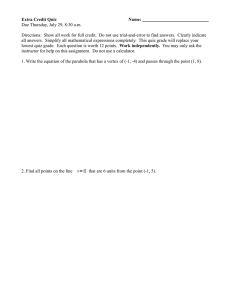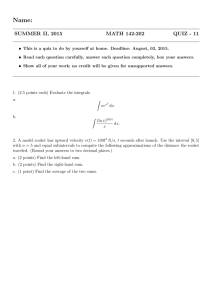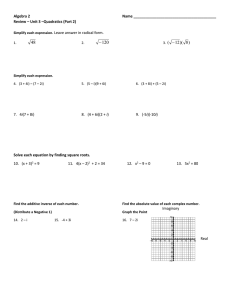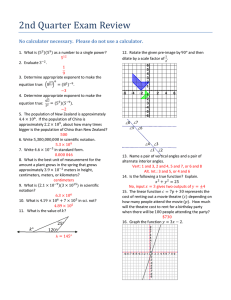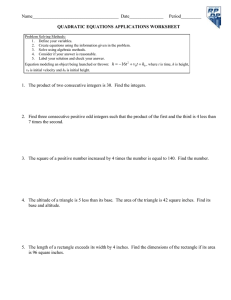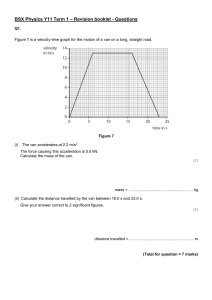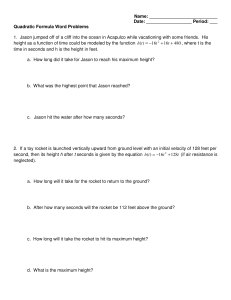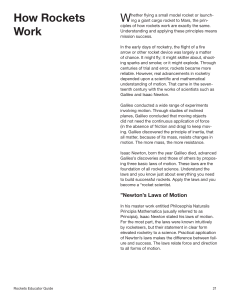Review Quarterly #1 Exam Name: ____________________ Chapter 1 and 2
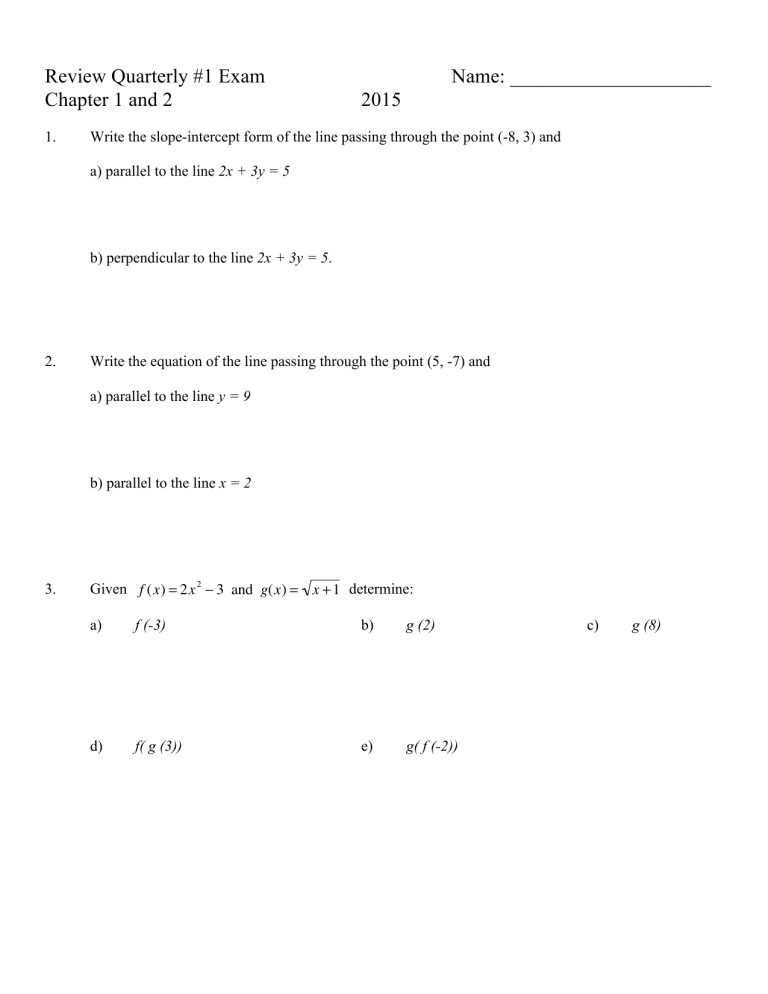
Review Quarterly #1 Exam Name: ____________________
2.
Chapter 1 and 2
1.
2015
Write the slope-intercept form of the line passing through the point (-8, 3) and a) parallel to the line 2x + 3y = 5 b) perpendicular to the line 2x + 3y = 5 .
Write the equation of the line passing through the point (5, -7) and a) parallel to the line y = 9 b) parallel to the line x = 2
3. Given f ( x )
=
2 x 2 −
3 and g ( x )
= x
+
1 determine: a) f (-3) b) g (2) d) f( g (3)) e) g( f (-2)) c) g (8)
4. Determine the domain and range of each function. (Write your answer in interval notation) a) f ( x ) = ( x − 2)( x + 7) b) f(x) = 64
− x 2 c) f ( x )
= x
−
5
+
7 d) f ( x ) = x
5
− x
2 −
9
(Domain only) e) f ( x ) = x 2 + 3
5. Use your graphing calculator to graph the equation and determine the open intervals on which the function is increasing, decreasing, or constant. Then determine any relative maximums or minimums on the graph. a) y = x 2 + 2 x + 1 b) y = x − 2 + 5 c) y
=
( x
−
1)( x
+
2)( x
+
6. Determine if the function is even, odd, or neither. a) y
= x
3 b) y
=
( x
−
3)
2 c) y
= x
2 −
3
7. Determine the equation of the parabola with Vertex (2, – 3) and containing the Point (– 4, – 8).
1)
11.
10.
9.
8.
15.
14.
12.
13. Solve for ALL zeros: a.) f ( x ) = x 3 + 6 x 2 − x − 30 b.) g ( x ) = x 4 + 9 x 3 + 23 x 2 + 11 x − 4
16. Find ALL asymptotes and holes of the rational functions. a.) f ( x ) = x
−
1 x
+
3 b.) f ( x )
= x
2 x 2 − 4
+
3 x
+
2 c.) f ( x )
= x
2 x 3 − 4
+
4 x
−
5
17. Solve each rational function. Eliminate any extraneous solutions from your answer. a.)
2 x − 1 x
= x
+
3 b.)
8 x
− x
=
4 c.)
2 x
+
3
−
3 x
−
4
= x
2
2 x − 2
− x
−
12
18. If a rocket is fired from a platform 20 feet off the ground with an initial velocity of 100 ft/sec, determine: a.) the equation that represents the rocket’s path (recall: s ( t ) = − 16 t 2 + v
0 t + s
0
.) b.) the time it takes for the rocket to hit the ground. c.) the maximum height of the rocket. d.) the time it takes for the rocket to reach its maximum height.
19. The distance and time that a ball is bouncing is listed in the table below: a.) Use your calculator to determine a Quadratic Regression model to represent the path of one bounce.
(Round each coefficient to 3 decimal places.) b.) What is the R 2 value for this data? Is the model a good fit for the data? c.) Predict the height of the ball at t = 0.25 seconds. d.) At what time will the ball change direction?
20. Write an equation to represent each statement below: a.) The area of a circle is directly proportional to the product of its radius squared and the constant π . b.) The force F required to stretch a spring is proportional to its unstretched length x . c.) The refraction index of a medium n , is indirectly proportional its velocity, v.

